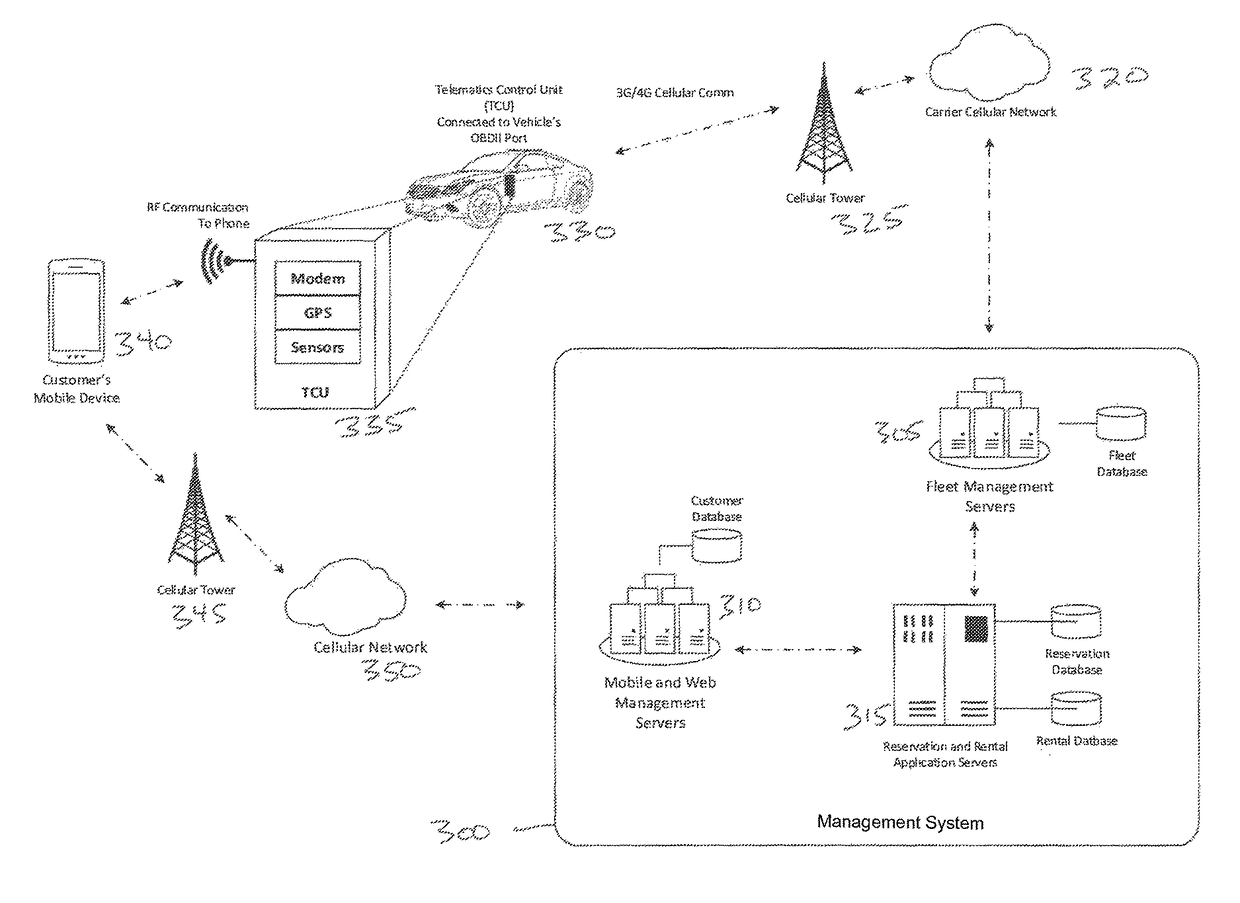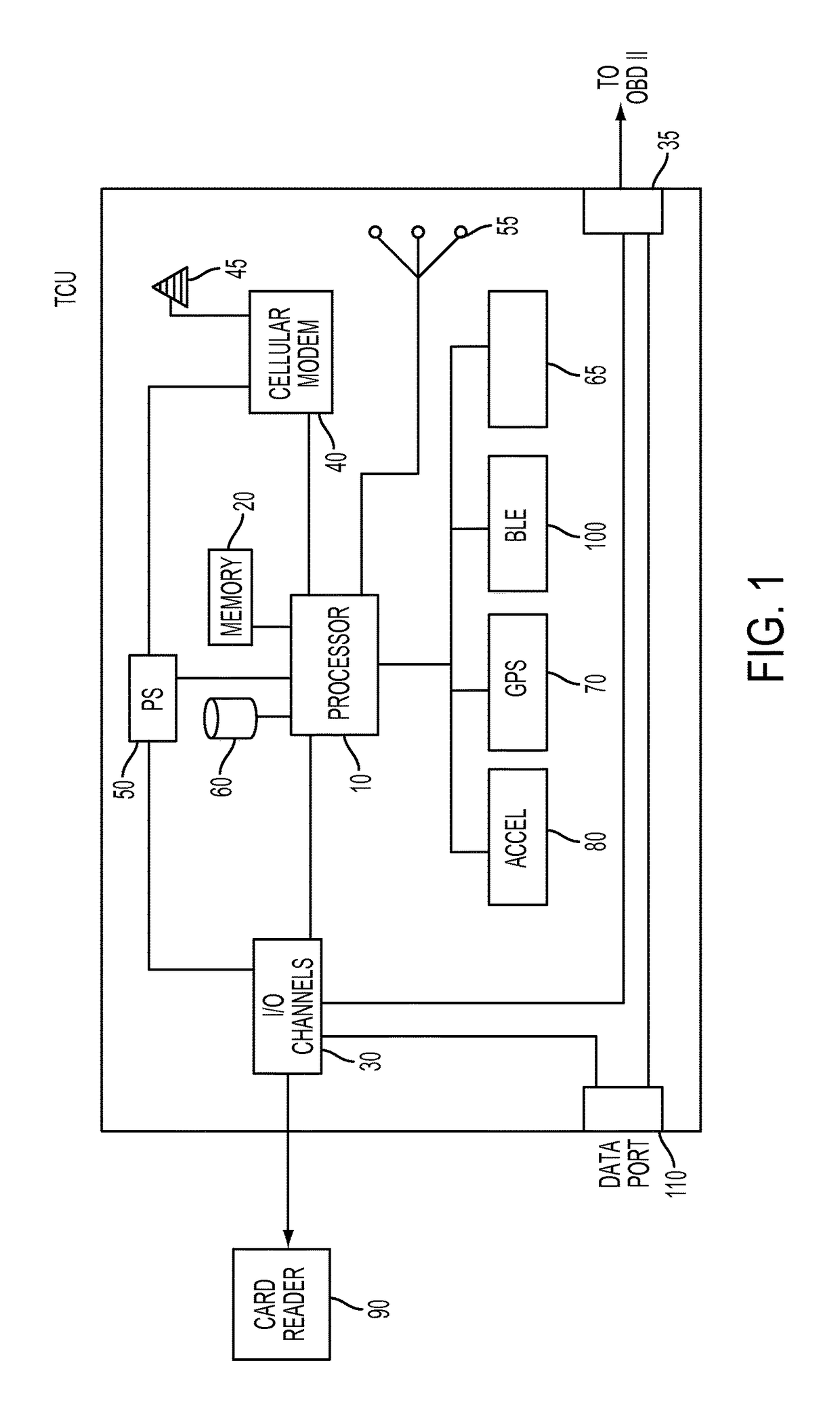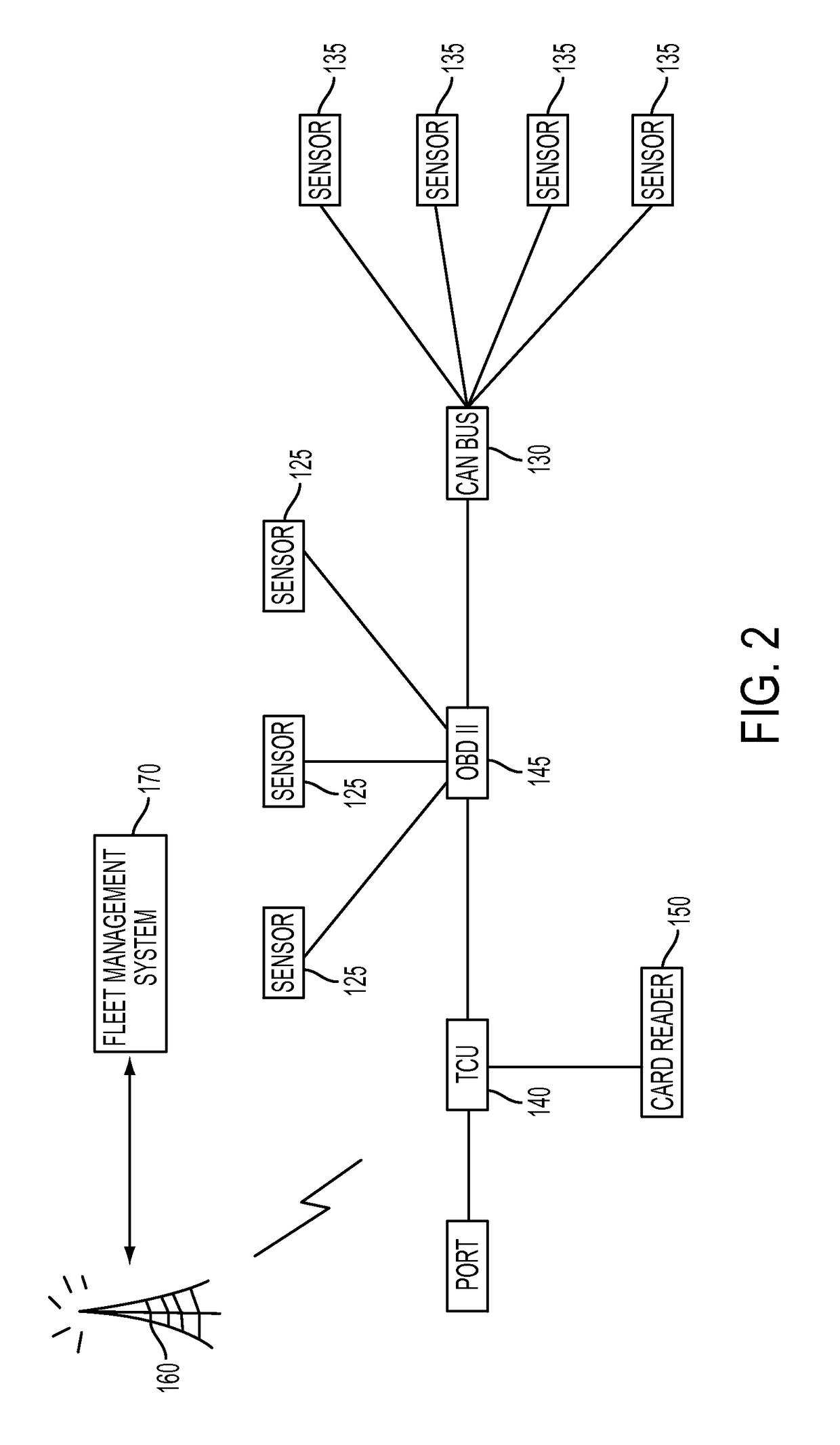Telematics system, methods and apparatus for two-way data communication between vehicles in a fleet and a fleet management system
a fleet management system and two-way data technology, applied in the field of telematics systems, methods and apparatus, can solve the problems of inability to communicate with the vehicle, use of cellular communication capability, numerous limitations of existing systems, etc., and achieve the effect of convenient and quick installation
- Summary
- Abstract
- Description
- Claims
- Application Information
AI Technical Summary
Benefits of technology
Problems solved by technology
Method used
Image
Examples
Embodiment Construction
[0025]It is to be understood that the system, methods and apparatus of the present invention are not limited to specific components, network connections, or arrangements described and disclosed herein, as such may vary. It is also to be understood that the terminology used herein is for the purpose of describing particular embodiments only, and is not intended to be limiting.
[0026]As used in the specification and the claims, the singular forms “a,”“an” and “the” include plural referents unless the context clearly dictates otherwise. Further, the terms “additional”, “optional”, “optionally”, “may” and the like mean that the subsequently described operation, event or functionality may or may not be required, and that the description includes instances where said operation, event or functionality occurs and instances where it does not. The word “comprise” and variations of that word, and the word “include” and variations of that word, mean “including but not limited to,” and are not in...
PUM
 Login to View More
Login to View More Abstract
Description
Claims
Application Information
 Login to View More
Login to View More - R&D
- Intellectual Property
- Life Sciences
- Materials
- Tech Scout
- Unparalleled Data Quality
- Higher Quality Content
- 60% Fewer Hallucinations
Browse by: Latest US Patents, China's latest patents, Technical Efficacy Thesaurus, Application Domain, Technology Topic, Popular Technical Reports.
© 2025 PatSnap. All rights reserved.Legal|Privacy policy|Modern Slavery Act Transparency Statement|Sitemap|About US| Contact US: help@patsnap.com



